DJI Avata review: a brilliant new ready-to-fly FPV drone for budding aerialists
The new DJI Avata takes aerial drone cinematography to a whole new sphere – here's our review

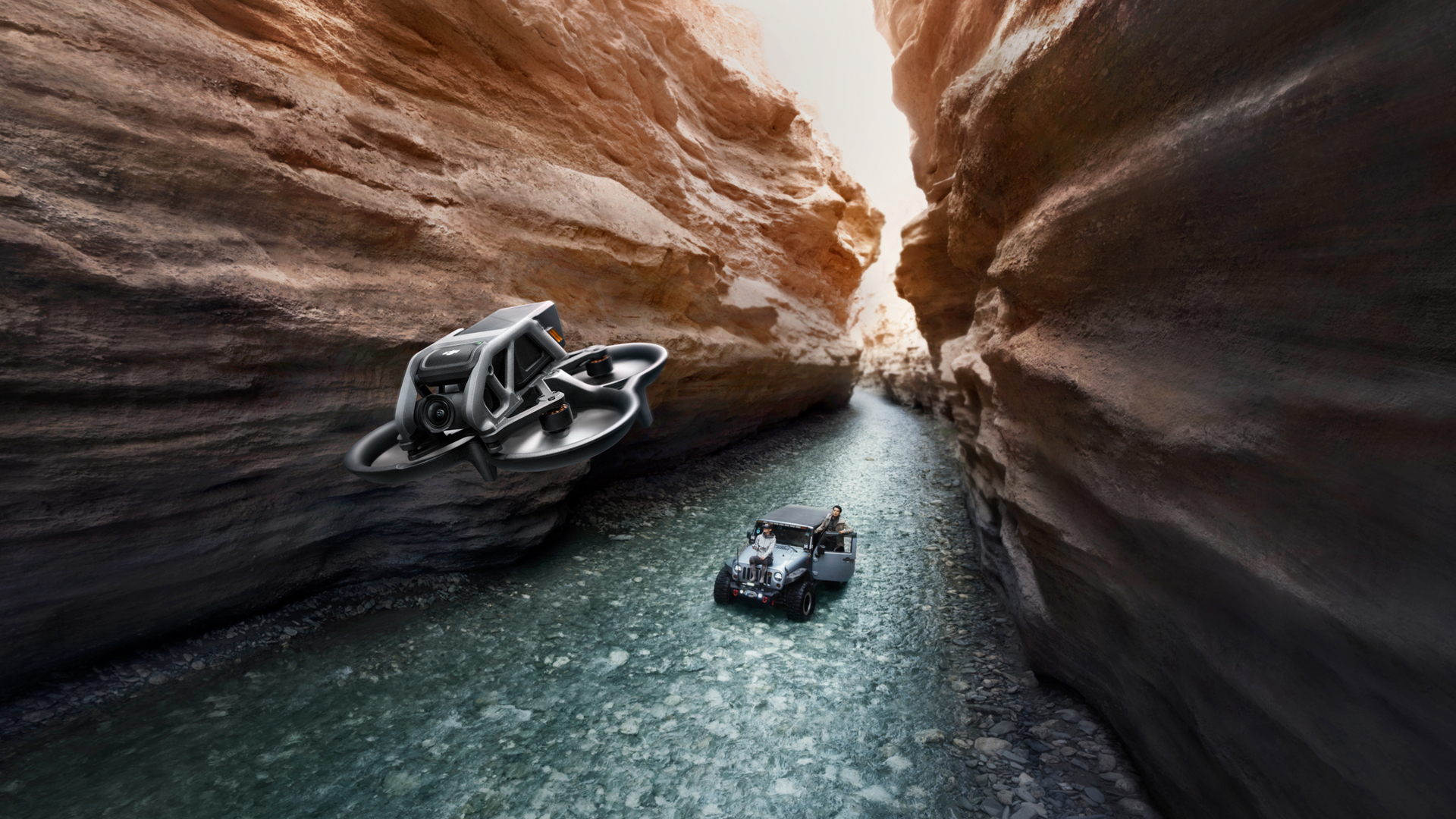
If you fancy the idea of FPV flying using goggles but haven’t a clue how to build an FPV drone yourself, DJI is here to help with a stunning ready-to-fly drone that swoops around like bird of prey. If you’ve had enough of standard aerial footage and are ready to lift your game to the next cinematic level, the DJI Avata is the drone for you.
-
+
Ready to fly out of the box
-
+
Superb headset system
-
+
Brilliant motion controller
-
+
It shoots 4K video
-
+
Very fast indeed
-
-
Just 18 minutes flight time
-
-
Takes a while to set it all up
Why you can trust T3

Welcome to our review of the new DJI Avata, the first high-resolution FPV camera drone designed for the masses.
As you’re doubtless aware, Shenzhen-based DJI is famous for its range of cinematic drones designed for shooting smooth high-resolution aerial video and pin-sharp stills. You can see a lot of DJI examples in our guide to the best camera drones.
However, the trouble with conventional drones is that they are only capable of shooting levelled footage as if viewed from a floating air balloon – no matter what you do with the drone, the gimbal-equipped camera will always keep the horizon steady. No question, the conventional system continues to serve both consumers and the world of commercial film-making extremely well, but now there’s a new type of drone taking the world by storm and it’s called the CineWhoop.
Not being one to lose out on new trends, DJI recently branched out into first-person view territory with its own DJI FPV drone, a ready-to-fly drone that is relatively easy to get a handle on, even for a beginner. However, as great as the DJI FPV is, it’s still a big, heavy thing that is incapable of shooting the kind of sensational footage a CineWhoop drone can achieve simply because it’s too large. So DJI went back to the drawing board and whipped up the cleverly-named Avata (is it pronounced Avatar or Avaata?), a mini ready-to-fly FPV CineWhoop-style drone that is easy enough for a monkey to fly.
Let’s see what this baby can do.
DJI Avata review: price and release date
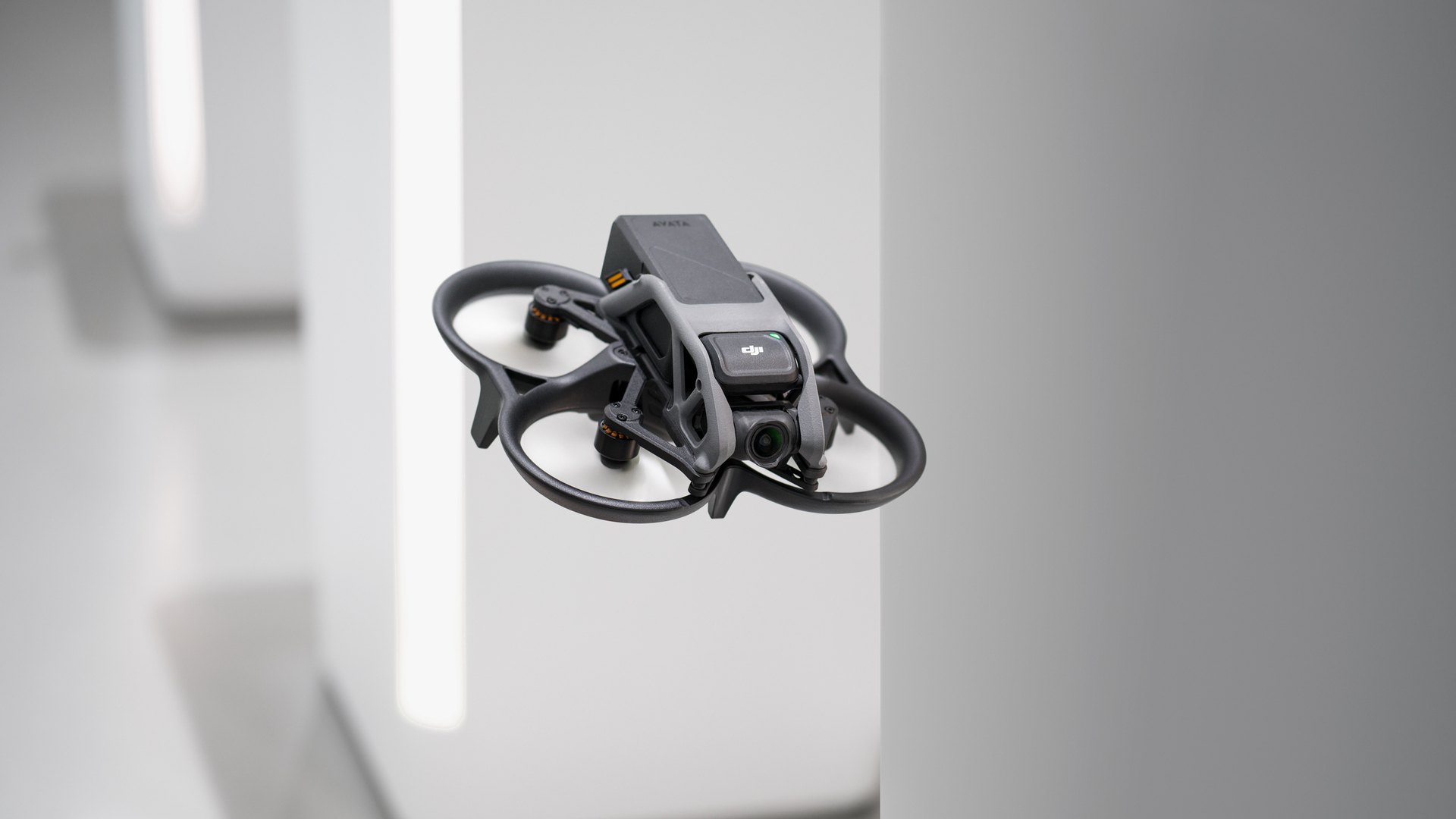
The Autel Evo Lite+ is available in three colours
The DJI Avata is released on 25 August and is available in three main configurations: a stand-alone unit priced £499/$629 and two different combos – Pro-View Combo with DJI Goggles 2 (£1,229/$1,388) and the cheaper Fly Smart Combo with DJI FPV Goggles V2 (£989/$1,168).
DJI Avata review: what is FPV?

A screen grab from the DJI Avata 4K camera
For the uninitiated, FPV stands for First Person View. Flying an FPV drone requires wearing a stereoscopic headset that relays the live image from a camera mounted on the nose of the aircraft straight to the eyes of the pilot. It is the closest experience to actually flying, only without your feet ever leaving the ground. To say it is immersive is an understatement. Imagine what it must be like to be a seagull gliding across the skies one second and swooping down to pick up a fish the next, and that’s FPV in a nutshell. The concept quite literally emulates the characteristics of a flying bird or aircraft, so when you turn left or right, the whole horizon banks in that direction.
Get all the latest news, reviews, deals and buying guides on gorgeous tech, home and active products from the T3 experts
At this point I should add that wearing goggles while flying a drone is a daunting experience for the beginner and often quite nauseating, too. This is because our brains aren’t geared towards seeing imagery constantly bank from side to side while the head is stationary. Hence you may find your head moves around a lot at first until you get used to it. You’re also advised to rest quite frequently and preferably sit down when flying to help prevent the onset of nausea.
By law, anyone flying an FPV drone like the Avata must have a spotter alongside so they can see the drone at all times. You can read more about UK drone laws in our guide to UK drone regulations.
DJI Avata review: what is a CineWhoop?

The humble Shendrone Squirt – the CineWhoop that started it all
CineWhoop has become a generic term for a type of build-it-yourself FPV drone that is not much bigger than an outstretched hand and usually fitted with a GoPro or equivalent high-quality camera. The CineWhoop craze was spawned by the racing drone, another tiny flyer that can manoeuvre through the smallest of gaps, like broken windows, door ways, in fact any portal large enough to accommodate the drone’s diminutive size.
The trouble with racing drones is that they they’re equipped with poor-quality cameras which are used to transmit visuals back to a pair of goggles worn by the pilot. Consequently, the footage they shoot is of very poor quality that can’t hold a candle to any modern conventional camera drone. Thankfully this all changed when one Robert McIntosh strapped a GoPro to a tiny drone and produced his sensational award-winning first-person-view video of Venice Beach, California. This was quickly followed by Andy Shen’s Shendrone Squirt and, before long, the CineWhoop category was born.
However, the trouble with the vast majority of CineWhoop drones is that they need to be assembled from scratch from multiple parts, and that’s a task that’s way beyond the scope of most wannabe FPV pilots who just want to take a drone out of a box and fly it. Enter the DJI Avata, a mini drone that brings CineWhoop-style flight characteristics to a much wider audience.
DJI Avata review: setting it up

Unlike a normal DJI drone that takes about five minutes to initially set up, this one’s a whole new ball game that involves linking the headset, drone, Motion Controller and a phone running the DJI Fly app. It took me about 15 minutes but thankfully it all worked first time, which is something I wasn’t expecting. Mind, soon after syncing all the parts together I then had to wait for a firmware update and then another series of updates for each of the three batteries it came with. This is quite a normal process with all new drones, mind, so patience is key.
Once the drone has been initialised, subsequent setup procedures are relatively straightforward but still not as fast as a normal DJI drone. This is because you need to plug a battery pack into the goggles via a curly cable (the pack is placed in your pocket), switch on the drone and turn on the hand controller. In my tests, all three units linked up every time after about 30 seconds but I’d say the whole process still took about five minutes from getting everything out of a bag to taking off.
DJI Avata review: design
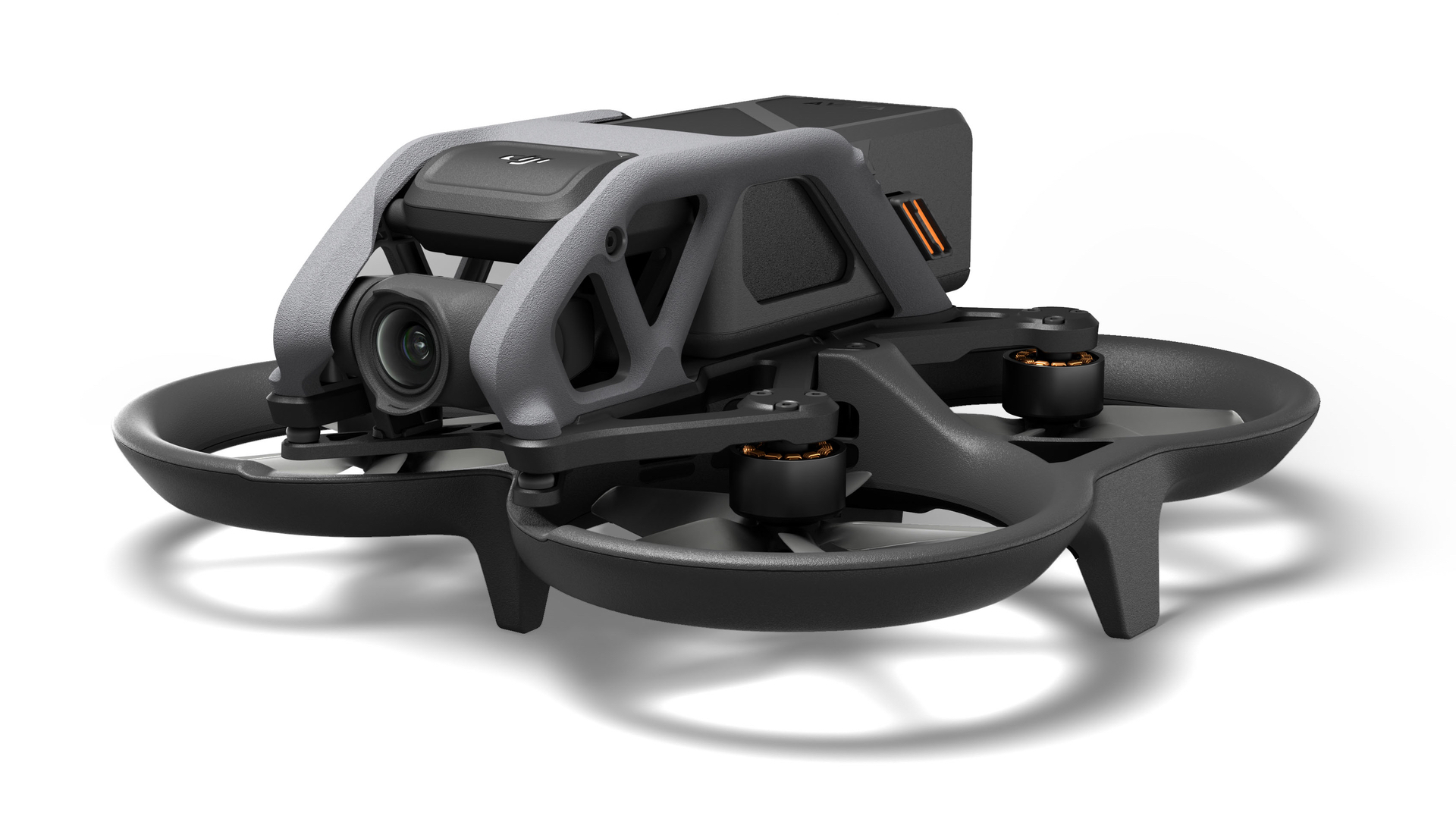
The DJI Avata weighs 410 grams (considerably more than the DJI Mini 3’s 249g but much less than the Mavic 3’s 895g) and it’s about the size of a large outstretched hand (180×180×80mm). Despite its arms not being able to fold, it’s still eminently portable, even with the headset and Motion Controller in tow.
Like most CineWhoop drones, the Avata looks so ungainly and top heavy you wonder how it could possibly fly. But today’s flight controllers are so slick that they could probably make a dustbin take to the sky.
The Avata uses a ducted propellor system comprising five blades in each port. This combination gives the drone more than enough lifting power to get its excellent 48MP 1/1.7-inch CMOS-based camera off the ground. And since the props are all very well guarded by the robust ducts, it should withstand quite a few crashes. That said, I’d be doubly careful if flying it indoors because it would almost certainly smash through a window pane if flown carelessly.
DJI Avata review: DJI headset

Although you can fly this drone line-of-sight without the goggles, it’s naturally much more immersive an experience wearing them. After all, it’s what it was designed for. The DJI goggles are amazingly comfortable and not too heavy on the head. Furthermore, the quality of the footage streaming live from the nose of the craft is astoundingly sharp and bright which makes flying it a confidence-inspiring breeze.
There is the wherewithal to have your phone plugged into the headset while flying so you can change settings on the drone but this just adds more paraphernalia to an already busy set up. With this in mind, DJI have included a means to adjust camera and flight parameters by using a small touch-sensitive square on the side of the goggles. It works okay but it can also be frustrating trying to remember if it’s a two-finger tap or a horizontal swipe to get to the menu you want.
DJI Avata review: motion controller

The Avata can be flown using the optional DJI FPV Controller 2 and this is certainly a worthwhile investment if you’re an experienced FPV pilot who wants to unlock Manual mode. For everyone else, the included Motion Controller will more than suffice. The concept is simple – tilt you hand forward and gently pull the acceleration trigger, and the drone will move forwards and gain altitude. To lower the altitude keep holding the trigger and pitch your hand backwards. Want to go left or right? Easy, just tilt your hand in the direction you want the drone to go. A dot in the centre of the screen makes it really easy to aim the drone at a particular subject. And if it gets hairy, there’s a textured brake button for the thumb. Mind, I found it braked well enough by just releasing the trigger.
This all sounds terribly complicated and we all know how awkward those gyroscopic iPhone games are, but DJI has nailed the programming so well that it becomes second nature when flying. With practice you should be able to guide the drone through small obstacles and fly around your house without destroying everything.
However, there is one caveat when using the Motion Controller – you can’t fly backwards. According to the inter web, backwards flying is only achievable using the DJI FPV Controller 2 with the drone in manual mode.
DJI Avata review: camera performance
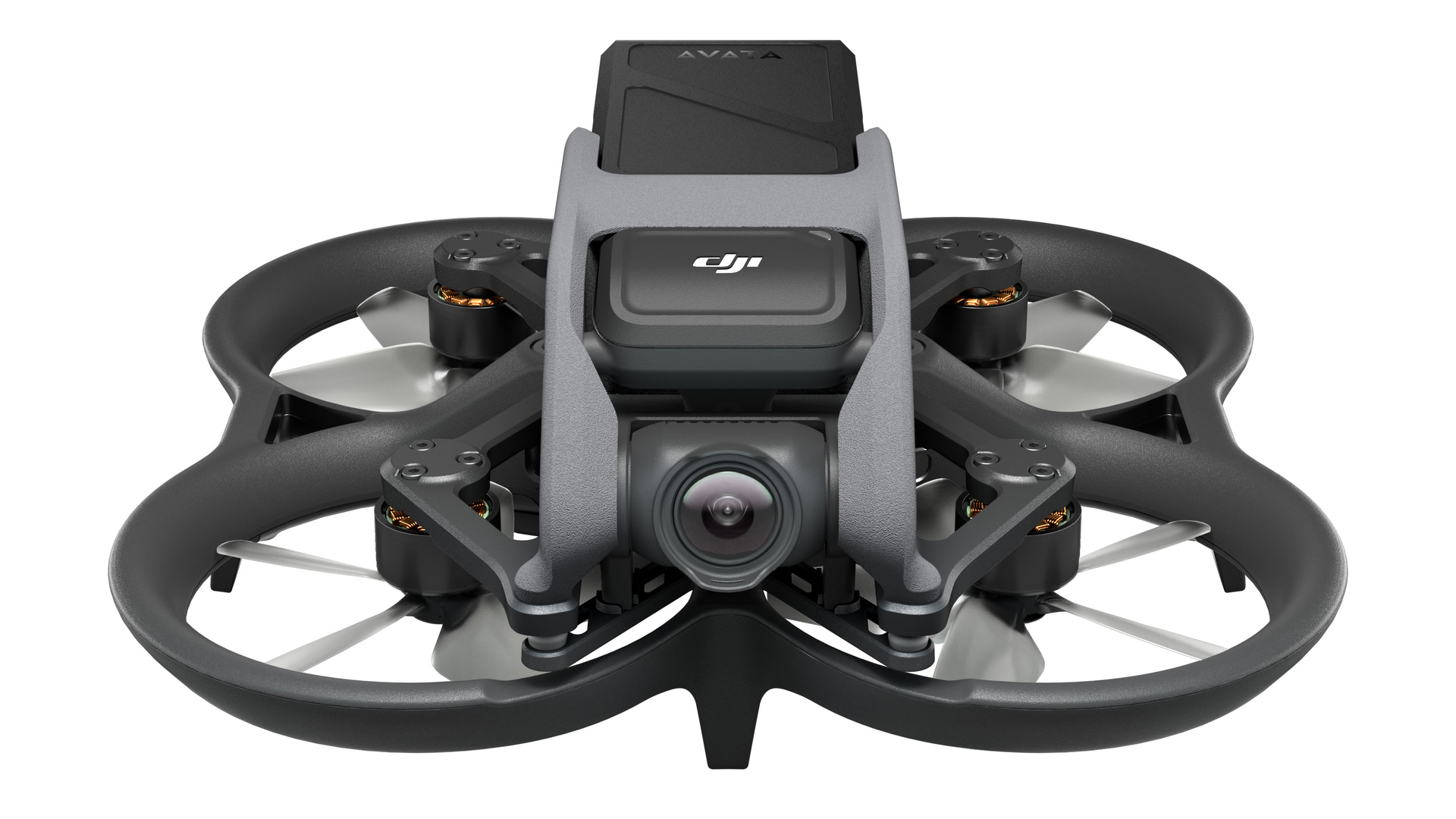
The Avata’s camera features a 1/1.7“ CMOS sensor capable of recording in 4K at 60fps and 2.7K at 120fps. Since this drone’s gimbal has only one axis, images are steadied using horizon-steady electronic image stabilisation. The camera’s field of view is a super wide 155˚.
Although the footage from the camera doesn’t look quite as sharp as DJI or Autel’s conventional drones (even their sub-249g models), it’s still brilliant enough for presentation on a 27-inch computer screen and more than ample enough for a tablet or phone.
DJI Avata review: flight performance
Although the Avata’s flight characteristics are similar to most standard drones (they all bank left and right when turning), the camera on this model stays straight. Hence, as it banks the horizon tilts, giving the sensation of being strapped to an aircraft wing.
That said, turns are softened considerably in the camera so the image in the goggles never suddenly jolts left or right. In fact everything is as smooth as a buzzard riding a thermal. However, I did notice that it’s not great to fly at an angle in stronger winds if you want straight footage because the drone tilts to one side to compensate and the footage ends up skew. It’s also much louder and higher pitched than other drones so bear that in mind if flying anywhere within earshot of other people.
If you like speed, you’ll love this model. In Normal mode it’s a shade under 18mph and in Sport mode it’s an ample 31mph. Believe me, 31mph is plenty fast enough when it’s scooting along just half a metre off the ground. Better still, if you use the optional FPV Controller 2 and select Manual mode, it hits a phenomenal 60mph! I hasten to add that I didn’t try Manual because I didn’t have the FPV Controller 2 controller to hand and even if I had, I wouldn’t have dreamt of flying in manual without several days of practice on DJI’s Flight Simulator app. Manual mode opens a whole can of worms but once you’ve mastered it, you’ll be able to pull off eye-popping manoeuvres that no other conventional drone is capable of performing.
For the record you get about 18 minutes of flight time with the Avata – about as much as you’ll be able to stand in any one session – and a maximum transmission range of six miles (10km).
DJI Avata review: verdict
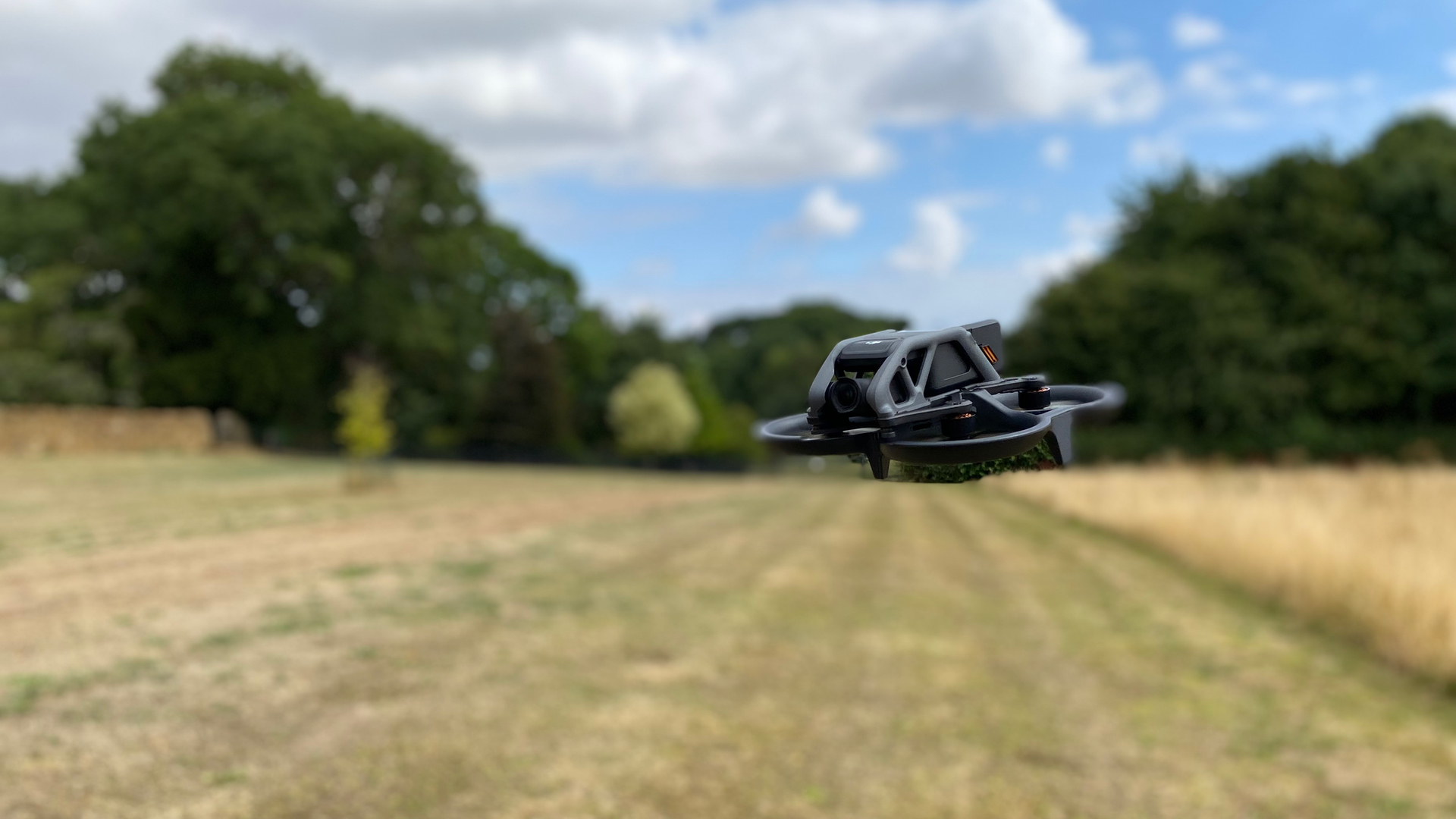
The DJI Avata on a visit to the countryside
I much preferred this drone to the DJI FPV model that preceded it. It’s a lot smaller and so easy to fly using the Motion Controller – simply point and squirt. So, if you fancy getting into FPV flying without the massive hassle of sourcing different parts and fitting your own flight controllers and a million other gubbins, I wholeheartedly recommend this little cracker. It will change the way you look at the world.
- Looking for a different type of drone? Try our guide on How to buy the right drone for you
Derek (aka Delbert, Delvis, Delphinium, Delboy etc) specialises in home and outdoor wares, from coffee machines, white appliances and vacs to drones, garden gear and BBQs. He has been writing for more years than anyone can remember, starting at the legendary Time Out magazine – the original, London version – on a typewriter! He now writes for T3 between playing drums with his bandmates in Red Box (redboxmusic).
